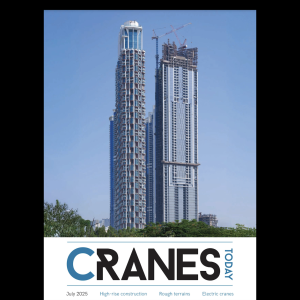Boeing airplane damping technology is being used to help protect two container cranes against earthquakes and hurricanes at the Turkish port of Asyaport, on the Sea of Marmara, which is in a major seismic zone.
The base anti-seismic isolation system (BASIS) installed on the cranes comes from Tacoma, USA-based structural engineer Casper, Phillips & Associates (CPA). The BASIS system is designed to protect the cranes’ main structures from damage and, according to CPA, is effective even on Super Post-Panamax size cranes or larger.
Both cranes in Asyaport have a 30.48 metre (100 ft) gantry span, 68 m (223 ft) outreach, 20 m (66 ft) back-reach, and a 46.3 m (152 ft) lifting height above the gantry rail.
The BASIS operates on the cranes’ trolley travel direction and is installed between the cranes’ sill beam and main equaliser beam. It comprises two friction damper assemblies, two energy restoring device assemblies, a guiding device, and two friction damper locking devices.
The friction dampers are manufactured by the Canadian company, Quaketek, the restoring device is based on a Conductix-Wampfler buffer, while the mounting base and system assembly are provided by the crane manufacturers, said CPA.
This type of friction damper was used extensively at the Boeing commercial airplane factory in Everett, Washington, about 20 years ago, said CPA. The company has a close relationship with Boeing, which was its first ever client after it formed in 1987. Over the years CPA has carried out several overhead crane projects for Boeing and earthquake upgrades at the company’s Everett assembly building in the USA.
The BASIS system received a Chinese patent in 2018 and was first tested on a ship-to-shore (STS) crane in 2020.
“There are alternative crane seismic systems on the market but BASIS outperforms them,” claimed Mike Zhang, head mechanical engineer at CPA. “The friction damper does not slip under normal operations, so the structure maintains the same dynamic and static stiffness as a crane without the seismic device. During a hurricane, when the tie-downs are engaged, the seismic system can be locked to prevent the dampers from slipping. We have also developed a special stowage pin assembly that can accommodate the crane movement during an earthquake, even during a microburst or storm wind when there are no tie-downs engaged. Also, the same profile damper can be set at a different sliding force to accommodate various cranes and seismic zones.”






